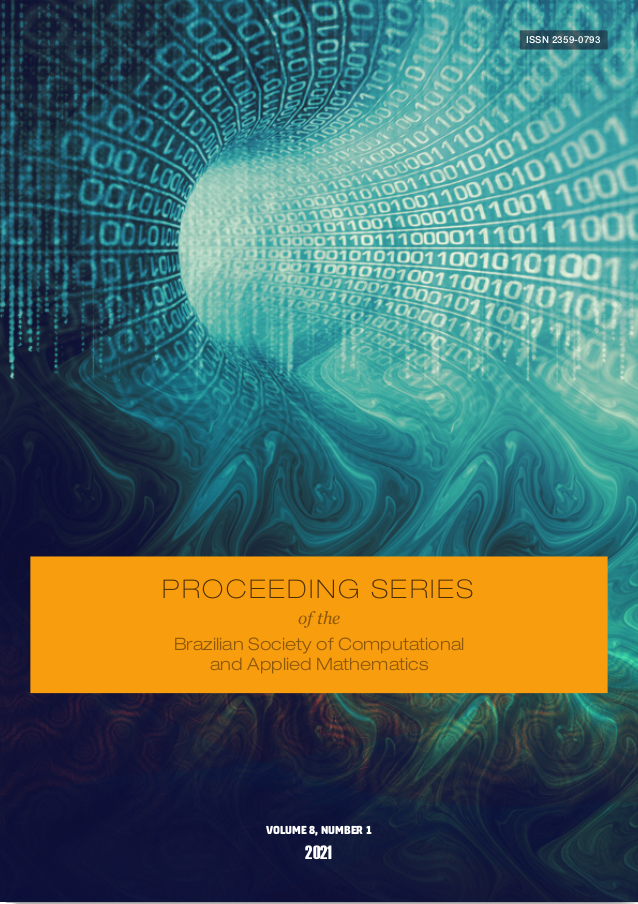EPIDEMIC: a didactic tool for teaching mathematical epidemiology
DOI:
https://doi.org/10.5540/03.2021.008.01.0402Palabras clave:
Epidemiology, Educational Code, Compartmental Models, Octave, Trend and Forecast GraphsResumen
Due to the COVID-19 pandemic, there was a growing interest in society in the area of epidemiology. In this context, emerged the initiative COVID-19: Observatório Fluminense (COVID19RJ), which is managed by a group of independent researchers affiliated with different Brazilian institutions. COVID19RJ publishes trend and monitoring graphs of the COVID-19 pandemic in Brazil and some countries around the world. Due to this demand, the need for an educational code for research in epidemiology arose, with the objective of encouraging and allowing the entry of more researchers in this area. So, EPIDEMIC was developed, this being a code that is organized in a didactic way and divided into three modules: modeling, trends and forecasts. In the modeling module, compartmental models are used to simulate population dynamics during an epidemic. In the trends module, it is possible to monitor the behavior of epidemics in countries, states or municipalities. And in the forecasts module, a statistical regressor is used to obtain predictions about the short- term behavior of epidemic curves. EPIDEMIC provides a tutorial with explanations and examples of use. The code was developed on the free software GNU Octave and is compatible with the proprietary software MATLAB. EPIDEMIC presents itself as a good aid tool for the teaching and learning process of epidemiology and, consequently, for the increase of researchers in the área.Descargas
Citas
Abdulrahman, I. SimCOVID: Open-Source Simulation Programs for the COVID-19 Outbreak, 2020. DOI: 10.1101/2020.04.13.20063354.
Adhikari, R., Bolitho, A., Caballero, F., Cates, M. E., Dolezal, J., Ekeh, T., Guioth, J., Jack, R. L., Kappler, J., Kikuchi, L., Kobayashi, H., Li, Y. I., Peterson, J. D., Pietzonka, P., Remez, B., Rohrbach, P. B., Singh, R. and Turk, G. Inference, prediction and optimization of non-pharmaceutical interventions using compartment models: the PyRoss library, 2020.
Brauer, F. Mathematical epidemiology: Past, present, and future, Infectious Disease Mod- elling, 2, 2017. D01:10.1016/j.idm.2017.02.001.
Chatterjee, N. Transparency, Reproducibility, and Validity of COVID-19 Projection Models, Towards Data Science, 2020. Available in <https://towardsdatascience.com/transparency-reproducibility-and-validity-of-covid-19-projection-models-78592e029f28>. Access in June 30, 2020.
COVID-19: Observatório Fluminense, 2020. Available in <https://www.covidl9rj.org>. Access in March 4, 2020.
Dantas, E., Tosin, M. and Cunha Jr, A. Calibration of a SEIR-SEI epidemic model to describe the Zika virus outbreak in Brazil, Applied Mathematics and Computation, 338:249-259, 2018. D01:10.1016/j.amc.2018.06.024.
Hamer, W. H., Cantab, M. D. and Lond, F. R. C. P. The Milroy Lectures ON EPIDEMIC DISEASE IN ENGLAND — THE EVIDENCE OF VARIABILITY AND OF PERSISTENCY OF TYPE, The Lancet, 167:569-574, 1906. DOI:10.1016/S0140-6736(01)80187-2.
Hladish, T., Melamud, E., Barrera, L., Galvani, A. and Meyers, L. EpiFire: An open source CTT library and application for contact network epidemiology, BMC Bioinformatics, 13, 2012. DOI: 10.1186/1471-2105-13-76.
Kermack, W. O. and McKendrick, A. G. A contribution to the mathematical the- ory of epidemics, Proceedinqs of the Royal Society of London, 115:700-721, 1927. DOI:10.1098/rspa.l927.0118.
Kermack, W. O. and McKendrick, A. G. Contributions to the mathematical theory of epidemics. II. — The problem of endemicity, Proceedings of the Royal Society of London, 138:5583, 1932. DOI:10.1098/rspa.l932.0171.
Kermack, W. O. and McKendrick, A. G. Contributions to the mathematical theory of epidemics. III. — Further studies of the problem of endemicity, Proceedings of the Royal Society of London, 141:94-122, 1933. DOI:10.1098/rspa.l932.0171.
Marathe, M. V. and Ramakrishnan, N. Recent Advances in Computational Epidemiology, IEEE Intelligent Systems, 28:96-101, 2013, (to appear).
Morrison, R. E. and Cunha Jr, A. Embedded model discrepancy: A case study of Zika modeling, Chãos: An Interdisciplinary Journal of Nonlinear Science, 30, 2020. DOI: 10.1063/5.0005204.
Ross, R. A. The prevention of malaria (with Addendum), London: John Murray, 1911, (to appear).

